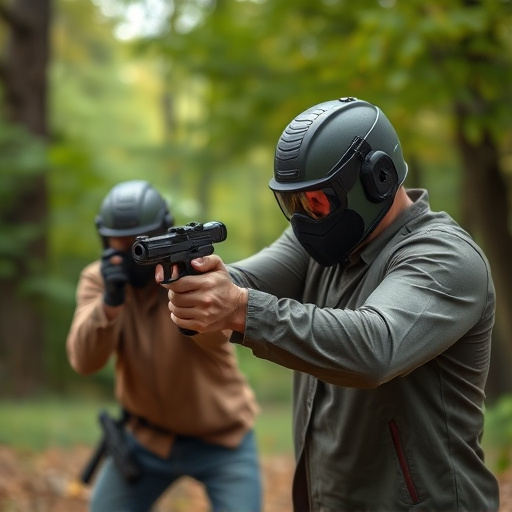The neuromuscular effects of stun devices like Tasers rely on high-voltage electrical pulses disrupting nerve impulses, causing involuntary muscle contractions and temporary paralysis. Their effectiveness is influenced by body position, muscle mass, and individual nerve response variability. Understanding these factors, along with the impact of environmental conditions like moisture, is crucial for weighing the risks and benefits of stun guns in self-defense and law enforcement, highlighting the need for proper user training and responder preparedness.
“Uncovering the true effectiveness of stun guns involves delving into the neuromuscular dysfunction they induce. These powerful devices temporarily incapacitate by overwhelming the body’s nervous system, yet their impact varies widely. This article explores the science behind neuromuscular effects, dissecting factors like voltage output, pulse duration, and human physiologic variations that influence stun gun performance. By understanding these nuances, we gain critical insights into their reliability as self-defense tools.”
- Understanding Neuromuscular Dysfunction Caused by Stun Devices
- Factors Influencing the Effectiveness of Stun Guns: A Comprehensive Analysis
Understanding Neuromuscular Dysfunction Caused by Stun Devices
Stun guns, also known as Tasers, operate by delivering a high-voltage electrical pulse that disrupts neuromuscular function, causing muscles to contract uncontrollably and leading to temporary incapacitation. This disruption occurs at the nerve impulse level, blocking signals from reaching the brain, which in turn paralyses movement. The effects are immediate but short-lived, with recovery usually occurring within a few minutes.
Understanding the neuromuscular dysfunction caused by stun devices is crucial for assessing their effectiveness and potential risks. While these devices can be powerful tools for self-defense and law enforcement, they do not always guarantee complete neutralization of a target. Factors such as body position, muscle mass, and individual variability in nerve response can influence the efficacy of a stun gun, highlighting the importance of proper training and understanding for both users and responders in situations where these devices are employed.
Factors Influencing the Effectiveness of Stun Guns: A Comprehensive Analysis

The effectiveness of stun guns, or electroshock weapons, relies on a complex interplay of factors that contribute to their neuromuscular effects. One key consideration is the electrical current’s ability to disrupt the target’s nerve impulses, leading to temporary incapacitation. The voltage, pulse width, and frequency of the shock play significant roles in achieving this stun effect. Higher voltages can penetrate deeper into the body, while precise pulse widths and frequencies ensure targeted disruption without excessive damage.
Additionally, the physical design of the stun gun and its contact points are crucial. The shape, size, and material of the prongs or probes directly impact the weapon’s ability to make solid electrical connections with the target’s skin. Proper placement and pressure are essential to maximize the neuromuscular response. Environmental factors, such as moisture on the skin or weather conditions, can also influence the device’s performance by affecting the current’s flow and penetration.
The neuromuscular dysfunction caused by stun devices, as discussed, plays a significant role in their effectiveness. Understanding how these devices disrupt muscular control and nerve signaling is crucial for optimal usage. Several factors, including distance, body position, and individual physiology, influence the overall impact of stun guns. By considering these variables, users can enhance the stun device’s efficacy while ensuring safety. In the context of personal defense, staying informed about the neuromuscular effects and their influencing factors is key to making informed decisions regarding self-protection.
